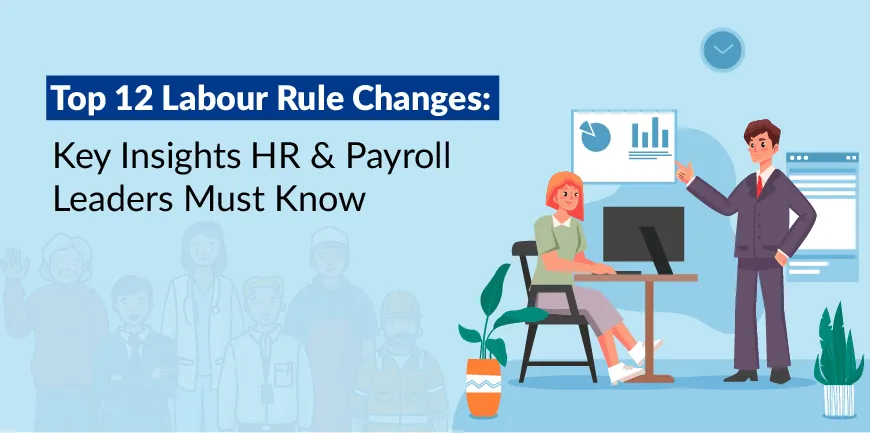
Contingency Recruiting: How It Works and Its Benefits
18/11/2024
What Is a Flexible Workforce and How to Build One in 2025?
18/11/2024A growing business means more responsibilities for every department, which includes the HR and Payroll departments as well. It’s established that where there is Payroll, there is HR and vice versa. But what exactly is the difference between the two and how do these two departments work together? This article will be exploring the topic of payroll vs HR and how they differ from each other.
What is Payroll Function?
Payroll function refers to the process of paying salaries to employees on time and accurately for the work they do for a specific period of time on a set date. Some businesses take care of processing payroll on their own, while some prefer outsourcing payroll function to an expert third party service provider. The third-party companies usually perform a wide range of payroll functions, such as
- Tracking of working hours
- Pay calculation
- Processing payroll on time
- Processing salary and employee benefits
- Maintain payroll records
- Tax and compliance
- Audit and reporting
What is the HR function?
The HR function involves the supervision, supporting, monitoring and monitoring of a company’s most valuable asset, its employees. The HR function covers a wide range of tasks that can help manage the workforce of an organization efficiently. Some of the features include-
- Recruitment and Hiring
- An intermediary that helps manage the relationship between the company and its employees
- Co-ordinate training and development programs
- HR compliance maintenance
- Management of all employees related information
- Management of compensation and benefits packages for employees
HR professionals play an integral part in shaping a company’s future as they maximize the potential of its workforce including planning of the workforce, organizational development and promotion of diversity and inclusion.
HR vs Payroll: Where do these Overlap and Divide?
The first and foremost thing to understand is that there is no versus when it comes to functions of HR and payroll. While there are a few functions that do overlap, there is a way that the two can work together.
When HR and payroll are separate functions with separate reporting structures, you get a well-defined structure that clearly expresses a separation of duties. There’s never a question about who does what and no well-intended co- mingling of assets like payroll data.
However, this separation can also reduce communication between the two functions, creating a risk that your payroll department may unknowingly violate an HR law (or vice versa).
To help you understand the overlapping and division of the two functions, here is a differentiation between HR vs Payroll duties-
1. Onboarding of employees
The HR department of an organization takes care of hiring and onboarding new employees, while the payroll department ensures that the employees are paid accurately and on time.
2. Management of employee data and records
HR duties involve maintaining of employee records that include their personal information, employment contracts signed during the onboarding period, evaluation of performance since their time of joining, job descriptions, and other confidential information. Processing of payroll depends on this employee information in order to ensure accurate and timely employee compensation and benefits administration.
3. Benefits and Compensation
The HR department of an organization usually helps in setting the compensation and benefits policies like the payroll, salary hikes, incentives, bonuses and other benefits packages for employees. Payroll makes use of this information to process the compensation and benefits by accurately calculating pay checks, deductions and benefits contributions.
4. Attendance and time
HR also sets policies related to work hours, time off as well as tracking the time-off requests, attendance, leaves, vacations and other absences. With all this information, payroll is processes by calculating every employee’s time off balances, pays like overtime payments, holiday pay, paternity or maternity pay or other wage reductions.
5. Compliance with respect to HR, wages and hours
HR and payroll departments collaborate to address compliance with employment-related rules and requirements. HR provides guidance on changes affecting payroll, such as changes in compensation, exemption status and minimum wage updates. Payroll implements these changes in payroll processing and reporting.
6. Processing of payroll
While this seems purely like a payroll task, it isn’t so. Only with the employee information and other changes and discrepancies that is updated and provided by the HR can the payroll processing commences. With that information only can payroll processing start that includes calculating pay period employee wages, payroll taxes, deductions and benefits contributions.
7. Exiting employees’ management
When an employee leaves the organization, HR is responsible for handling the entire exit process of the employee which can include exit interviews, final paycheck and benefits administration. Payroll duties include the timely disbursement of compensation and benefits to the exiting employee.
8. Reporting and analytics
This is one of the tasks where HR and payroll collaborate together to generate reports on employee-related metrics and analytics. The report can include headcount, turnover rates, workforce costs, benefit usage and other data that help in strategic decision-making.
HR is focused on managing the employee experience. Accuracy is important to the HR department, but it’s not the end-all-be-all.
While the payroll team’s goals are laser-focused on compliance, efficiency and accuracy.
Find the Right Comprehensive Payroll Solution
Finding the right comprehensive payroll solution is essential for streamlining operations, ensuring compliance, and enhancing employee satisfaction. The ideal solution should align with your company’s size, industry, and specific needs, offering not just accurate payroll processing but also robust features like tax management, compliance support, integration capabilities, and customizable options.
Investing in the right payroll solution saves time, reduces errors, and frees up resources, allowing your team to focus on strategic growth rather than administrative tasks. By carefully evaluating available options and selecting a payroll solution that scales with your business, you can create a more efficient, compliant, and employee-friendly payroll process that supports your overall organizational success.
Alp Consulting, being one of the best payroll solutions providers in the country can help you find the ideal comprehensive payroll solution for your company. We could be your ideal HR and payroll partner and guide you with the right solution and help streamline your business.
Frequently Asked Questions
1. How can we integrate payroll and HR?
There are three ways to integrate HR and Payroll, they are- through a bundled HRIS and payroll solution, a pre-built integration, or a custom integration. Businesses should consider their specific needs and resources when choosing the best integration option for their organization.
2. Can human resources handle payroll functions?
Yes, human resources can handle payroll functions. In fact, in most companies, payroll is handled by either the finance or human resources department and/or payroll experts. Payroll functions that HR can handle includes- Calculating, processing and distributing wages, salaries, bonuses and commissions based on hours worked, performance or other relevant factors.
3. Should payroll report to human resources or accounting?
There is no one right answer to the question. However, the best solution largely depends on your business structure and operations. If a third-party system handles your payroll, then access to financial data should be regularly provided to the Finance department. However, if your employees frequently have payroll queries, HR might be the better option.
Contact Us For Business Enquiry

Yugandhara V. M
Yugandhara V. M serves as the Assistant Vice President – HRO at Alp Consulting Ltd., bringing over 14 years of rich experience in Human Resource Outsourcing, payroll management, and statutory compliance. He specializes in driving process excellence across HR operations, ensuring seamless service delivery and compliance with labor laws. Yugandhara’s expertise lies in managing large-scale client engagements, optimizing HR processes, and implementing efficient workforce management systems that enhance organizational performance. He also leads comprehensive payroll services, ensuring accuracy, timeliness, and compliance for diverse client portfolios.



